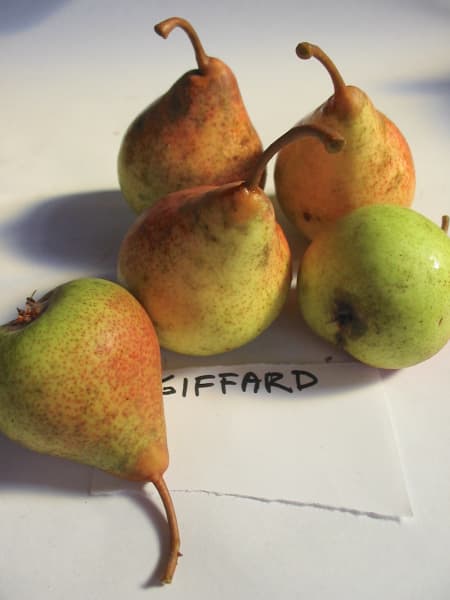Summer.
Chance seedling discovered by Nicolas Giffard, Foussieres, France, 1825. Introduced to the U.S. about 1850. Also called Beurre Giffard.
Very high-quality dessert pear is one of the first to ripen in our orchard, in midsummer about a week before Staceyville. Soft melting slightly coarse flesh is very similar to Bartlett. Delicious. Medium-sized acute-pyriform fruit has tender greenish-yellow skin with a dotted red blush and conspicuous greenish or russet dots. Small core. Pick them a little green and ripen them inside, or pick them daily just as they ripen. Makes delicious pear-cardamon jam.
The tree is medium sized, vigorous, spreading and productive. Extremely hardy. Z3. (2½-6' bare-root trees)
Maine Grown. BACK!



